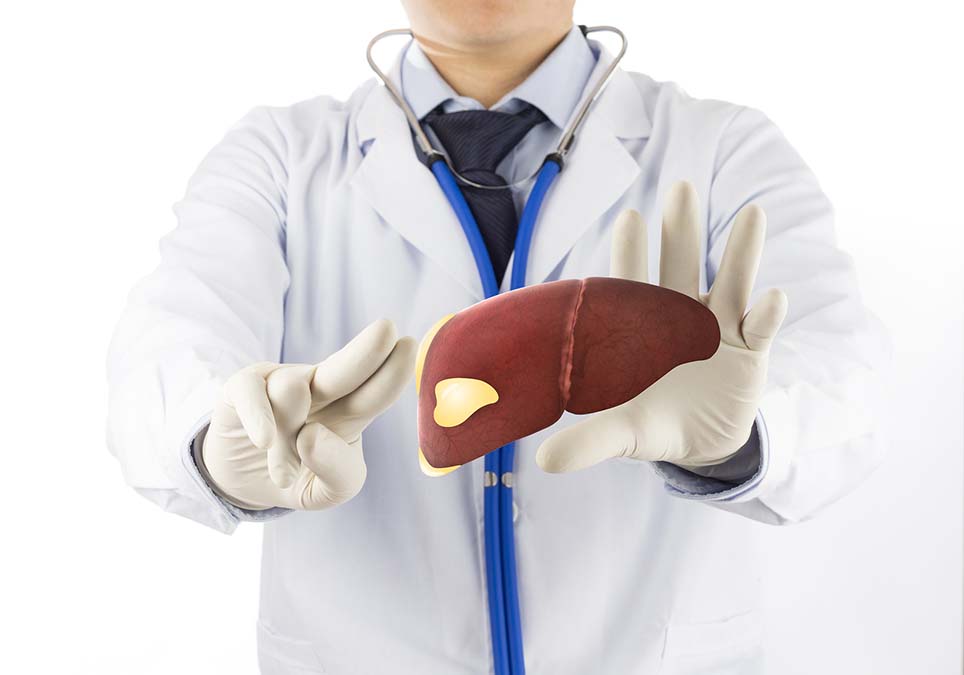 We’ve been led to believe that liver disease is more problematic after a certain age.
We’ve been led to believe that liver disease is more problematic after a certain age.
But a new study published in The Lancet Gastroenterology & Hepatology has now revealed that a particular group of teenagers and young adults are also at risk.
For years, scientists have been ringing alarms about the increase in obesity amongst children and young adults that leads to heart disease and diabetes, but few have studied the effects on the liver.
Non-alcoholic fatty liver disease (NAFLD) occurs when your liver cells are infiltrated by fat. Scientists call this steatosis. If this isn’t treated early, it scars the liver permanently – this is called fibrosis.
Researchers from the University of Bristol analyzed the information of 4,021 participants in their 20s, all of whom had been assessed for NAFLD as teenagers. They underwent a transient elastography FibroScan that detects liver steatosis and fibrosis.
Of those who did not have problematic alcohol habits, 20.7 percent had fatty livers, with 10 percent suffering from severe fatty liver disease.
In comparison, 25 percent of older adult populations around the world are estimated to suffer from it, implying that most of the damage is done before the age of 25.
Those who were classified as overweight or obese were more likely to have fatty livers than those at a healthy weight.
By the age of 17, only 2.5 percent suffered from moderate or severe fatty livers. It increased to 13 percent by the age of 24.
Researchers warned that the obesity epidemic among children in the West needed to be controlled to prevent further damage. They concluded these young people could remain healthy if they simply changed their diets and exercise habits.

 Overcoming IBD
Overcoming IBD Multiple Sclerosis
Multiple Sclerosis Banishing Bronchitis
Banishing Bronchitis Gum Disease Gone
Gum Disease Gone Overcoming Onychomycosis
Overcoming Onychomycosis Neuropathy No More
Neuropathy No More The Prostate Protocol
The Prostate Protocol Brain Booster
Brain Booster
 Ironbound
Ironbound
 Solution for Shingles
Solution for Shingles
 The Bone Density Solution
The Bone Density Solution
 The Ultimate Healing Protocol
The Ultimate Healing Protocol
 The Parkinson's Protocol
The Parkinson's Protocol
 The Chronic Kidney Disease Solution
The Chronic Kidney Disease Solution
 Overthrowing Anxiety
Overthrowing Anxiety The Fatty Liver Solution
The Fatty Liver Solution The Hypothyroidism Solution
The Hypothyroidism Solution
 The End of Gout
The End of Gout The Blood Pressure Program
The Blood Pressure Program
 The Oxigized Cholesterol Strategy
The Oxigized Cholesterol Strategy
 Stop Snoring And Sleep Apnea Program
Stop Snoring And Sleep Apnea Program
 The Arthritis Strategy
The Arthritis Strategy The Vertigo & Dizziness Program
The Vertigo & Dizziness Program The 3-Step Diabetes Strategy
The 3-Step Diabetes Strategy Hemorrhoids Healing Protocol
Hemorrhoids Healing Protocol The Erectile Dysfunction Master
The Erectile Dysfunction Master Weight Loss Breeze
Weight Loss Breeze The IBS Program
The IBS Program The Insomnia Program
The Insomnia Program The Migraine and Headache Program
The Migraine and Headache Program The Neck Pain Solution
The Neck Pain Solution The Menopause Solution
The Menopause Solution The Ejaculation Master
The Ejaculation Master The TMJ Solution
The TMJ Solution The Acid Reflux Solution
The Acid Reflux Solution The Fibromyalgia Solution
The Fibromyalgia Solution The Psoriasis Strategy
The Psoriasis Strategy